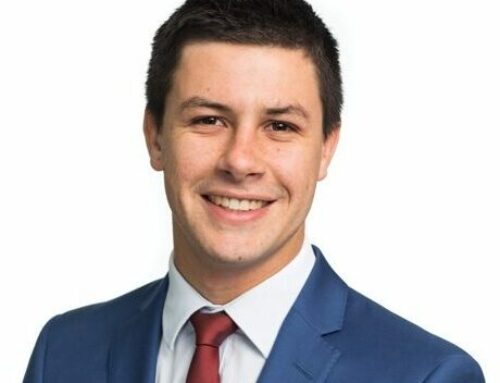Alex joined NDY in 2011 and became a director in 2013. During this time, he‘s held multiple leadership roles while delivering complex, multi-disciplinary projects across Australia, most notably in the health sector. He’s been actively involved in a number of committees focused on pandemic response and emergency preparedness. Alex has led NDY’s multi-disciplinary design input on several large complex projects, including Perth Children’s Hospital, Casey Hospital Expansion Project in Melbourne and, more recently, as Project Director for NDY’s role in the Byford Rail Extension and Curtin University Sciences Building project in Perth.
Alex offers broad technical expertise as NDY’s Chief Engineer and Mechanical Technical Director, gained from over 30 years in the UK, Europe and Australia. He is a chartered engineer and member of CIBSE, ASHRAE and a fellow of IHEEM in the UK. He brings specialist expertise in data-driven design and benchmarking, design for prefabrication manufacture and assembly, design and production efficiency and sustainable design solutions. Alex also maintains a keen interest in developing digital engineering-led design and production processes.
What inspired you to become an engineer?
Towards the end of my school years, I wanted to be an architect! Yes, the secret is out…
I didn’t fancy 7 years full-time study though, and the delayed income that came with it, so I turned to what was then, in 1980s Scotland, described as heating and ventilation engineering. The climate was so cold that air conditioning wasn’t that common back then. Both architecture and engineering appealed to my inquisitive nature, innovation, creativity and problem solving skills – all essential ingredients of becoming a successful engineer. Early inspiration included the strong Scottish engineering influence that really helped kick-start the industrial revolution – Brunel’s civil and mechanical engineering feats, especially the Clifton Suspension Bridge over the Avon Gorge in Bristol, and, from wider afield, a fascination with the early design and innovation sketches of one of the greatest engineers of all, Leonardo Da Vinci (before he discovered he wasn’t bad at painting either!).
Why mechanical engineering? What inspired you to become a mechanical engineer?
The ability to work with an integrated project team and apply science, problem solving, creativity and innovation to the design of the built environment, and leave a tangible outcome for occupants, brings a great deal of satisfaction.
What’s your career highlight project?
Over a career spanning more than 35 years, so far, there have been many highlights and some very exciting projects that I’m currently working on. I also hope for there to be many more in the future.
Highlights from my earlier career in the UK with DSSR include the New High Courts Justiciary Building in Glasgow, the West of Scotland Comprehensive Cancer Care Centre (Beatson Oncology), a new Rolls Royce Manufacturing Facility, several airport terminal expansion projects with BAA, the James Watt College of Further Education Ayrshire Campus, the Stobhill and Victoria Ambulatory Care Units in Glasgow (two similarly briefed hospitals delivered concurrently) and the various regional hospitals delivered throughout some of Scotland’s more remote communities.
My highlight projects since being with NDY have to be the new Perth Children’s Hospital and the Casey Hospital Expansion Project in Melbourne, simply on the basis of the time dedicated to these major infrastructure projects since arriving in Australia, but there have been many others as well.
Current highlights include early design stage involvement on the New Science Building at Curtin University and the early master planning works on what will hopefully be Western Australia’s first privately-funded small-to-medium-payload rocket launch facility with WA Spaceport.
What’s the trickiest problem you’ve encountered?
Perfecting stencilling notes on a velograph to the satisfaction of a career-hardened Glaswegian mechanical draughtsman – that’s what the first 6 months of my mechanical design engineering apprenticeship entailed.
In all seriousness, what this actually highlights is that those of my vintage will have experienced the most rapid changes in technology over our career lifespans – from hand-drawn masterpieces, use of facsimile machines for increased speed of communication, through early ‘computer-aided design’ machines the size of an old style typing pool, through to 2D/3D AutoCAD, Revit and BIM 360 virtual platforms, and the use of AR/VR tools for the development, visualisation and understanding of building designs. So, the trickiest thing that I think we’ve all had to do over the course of our careers is to be able to adapt to available and emerging technologies and embrace them in the increased speed and efficiency of our engineering design processes.
What’s an engineering myth you’d like to debunk?
That is doesn’t have to be more expensive to build more area on a project.
Sometimes it’s actually cheaper and better to build more, for less. Square metre cost benchmarking is a useful early tool in the assessment of financial viability of a project, but attention to integrated design detailing, and working with the construction industry to standardise design detailing, to offer up opportunities for pre-fabrication and off-site assembly can result in equally affordable buildings, and, importantly, doesn’t have to be a barrier to creativity and innovation.
Applying these principles to mechanical design in building services will allow us to make plantrooms and risers safer and easier to build, more accessible for maintenance and inspection and eventual end-of-life replacement future-proofed for expansion as the building size and use changes.
I’ve often applied the same space allocation principles to multiple plantrooms on the same project and by the end of the project you can clearly tell which plantrooms and risers have been subject to area-saving initiatives just to meet square metre based cost benchmarks.
What do you do outside of work that helps fuel your creativity and commitment to engineering?
I know it’s a cliché, but after putting a budding football career behind me in my late teens, I turned my attention to golfing. I initially played right handed through my 20s, and hit a plateau of a 20 handicap. Being predominantly left-sided, I changed to playing left handed (self-taught and kept my right handed grip – for those that are still following, work that one out!).
The creativity is a key part of my golf game, having to ‘imagine’ an impossible recovery plan after an errant shot into the trees, and the problem solving comes into the detailed mathematical calculations going on in your head as you work out the frictional resistance of the tightly mown greens, the force required to deal with the distance and slope between the ball and the hole and the many combinations of angle and speed that can propel your ball towards the hole.
Failing all of that, just hit and hope – seems to work for all of the non-engineers who beat me week in week out.
Which engineer has taught you the most?
I’ve been very fortunate to have learned a lot of guiding principles for life as well, as for my engineering career, from a multitude of people throughout my career at DSSR and NDY, and continue to learn new things each day, including from our latest intake of excellent graduates. Knowing this, I try to be as generous as time permits in giving back to anyone who will listen, and also through the mentoring and training activities that I carry out now.
What’s the biggest thing you’ve learned at NDY?
That the collective experience of the mechanical building services engineering team at NDY is second to none. Also that joining forces with Tetra Tech and leveraging the worldwide experience of our High Performance Buildings Group colleagues at Hoare Lea, Glumac and Cosentini there’s no mechanical engineering problem that we can’t solve. The High Performance Buildings Group is leading the way in modern, safe and sustainable, high performance building design solutions.
What professional relationships do you value the most?
All professional relationships that are respectful of each others’ role and are willing to work together to achieve the best for the client and project goals. Seems like an obvious one, but collaboration through an integrated project team always delivers better outcomes than individual professions working in isolation with no consideration of each other’s aspirations and challenges.
If you could change one thing about the built environment, what would it be?
Sustainability and safety should be a primary focus of all new and existing buildings.
Some excellent new buildings with impressive sustainable design credentials are being designed and delivered, not least the recently completed New Academic Building, Boola Katitjin at Murdoch University, and the Australian War Memorial project’s geothermal design that we will showcase later this week.
Older existing building stock however caters for a large proportion of energy consumed and carbon produced in the built environment and equal attention should be paid to these in order to minimise the impact on the environment for our future generations.
What does Making Spaces Work mean to you?
Making Spaces Work is NDY’s purpose and it concisely describes what our objective is in designing mechanical building services systems for the built environment. They need to be safe, healthy, efficient, comfortable, flexible spaces with appropriately designed HVAC systems and smart building automation that can easily react to changing ambient conditions and internal occupancy.
Tell us something that not many people know about you.
I’ve already given away that I initially wanted to be an architect. In addition to this, I’m also a fluent Italian speaker, having studied engineering as part of an early 90s student exchange in Bologna, Italy, the oldest university in the western world. While studying in Bologna, I met my future wife. We and our now 20-something kids have been speaking Italian at home as our family language ever since.
What innovative new approaches are you seeing when it comes to mechanical engineering?
Electrification (de-gasification) of heating and cooling plant and systems, the greening of the power grid, a greater emphasis on carbon reduction, better filtration and air distribution, and the adoption of smart building automation systems that will help achieve healthier, high performing and sustainable indoor built environments for all.
If you’ve worked across regions, countries, and/or Tetra Tech operating units, can you tell us about the key similarities and differences you’ve encountered when it comes to mechanical engineering and your projects?
With the first half of my career spent in colder climates and with a strong, early focus on sustainable design, I spent more time trying to ‘design out’ air conditioning than actually designing it into most buildings. I spent many weeks using IES to simulate different window and louvre opening patterns to maximise natural ventilation (cross flow, single sided or atrium transfer systems) and to assess estimated maximum summer temperatures and percentage hours above certain benchmark indoor temperatures.
This provided significant improvement in façade thermal performance, glazing design and lower infiltration rates over the 90s and early 2000s. I spent time solving conundrums like whether a first roughing filter should go before or after frost coils and, if not, what the fin spacings should be to prevent icing and clogging on the coil – all things that I don’t have to consider designing buildings in Perth, Australia.
Where do you see the future of mechanical engineering heading?
It has to be about designing safer, more efficient, healthy and comfortable, high performing buildings in an environmentally responsible way and the eventual omission of fossil fuel producing plant and equipment.
A stronger focus on embodied carbon is also necessary and should influence supply chain selection decisions around materials and products specified by mechanical engineers.
What legacy do you want to leave, when it comes to your career?
A higher performing, healthier and more sustainable built environment. The real beauty of what we do is that there is something tangible at the end of a project, something live, that is used, occupied, hopefully admired (that’s the architect coming out again…). The legacy are these buildings, and each generation of building should be higher performing than the one it replaces.
Give us an overview of your team, areas of expertise and the range of projects you work on?
NDY has approximately 200 mechanical engineers across all of our offices, and a further 1,500 across the High Performance Buildings Group and other associated operating units within Tetra Tech. This gives us worldwide access to a large pool of expert practitioners in their field. Collaboration across the various operating units occurs on a day-to-day basis and we regularly share and swap resources on either a permanent or seconded basis. This gives us huge opportunities to learn from each other, share and collaborate on all the key issues that we face in designing mechanical building services.
My role as Chief Engineer is to lead all of our NDY technical directors as we manage our design, documentation and project delivery standards, update specifications and provide technical guidance, training and support to all engineering staff within their design disciplines. I also provide strategic direction for implementing and achieving engineering excellence across the whole of NDY’s operations.
My role as Mechanical Technical Director is to lead the development of HPBG solutions in HVAC design, supported by a network of very experienced and talented technical managers in each NDY office.
During this campaign week, we will showcase some innovative design solutions from current projects and introduce a sample of our key mechanical design leads from across the company.










